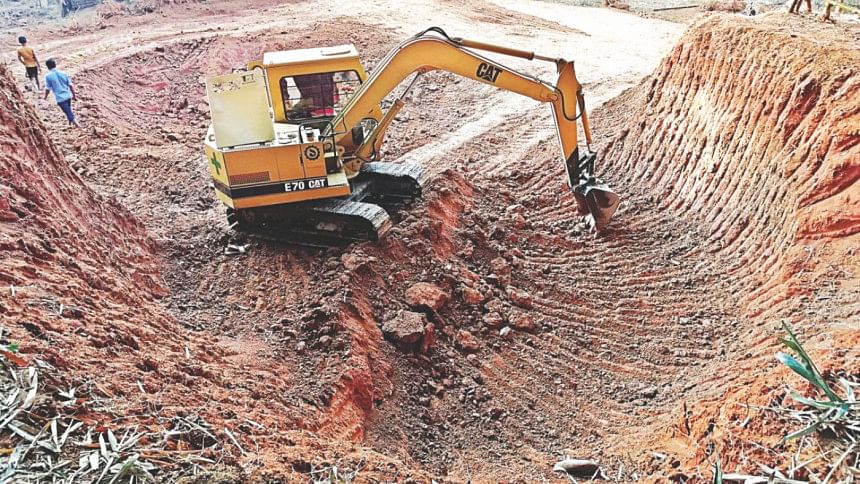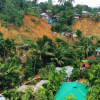Onslaught on Tangail hillocks

The landscape and ecosystem in Tangail are under threat as “influential people” are flattening hillocks, which are a geological feature of parts of the district.
The Tangail Sal forest grew around these hillocks, which are now disappearing, said Somnath Lahiri, senior research officer at the Tangail unit of Bangladesh Environmental Lawyers Association (Bela).
About three decades ago, these hillocks, locally known as “Chala” and “Tila”, was covered in vegetation and was a habitat for birds and snakes. Razing the hillocks also raises the risk of landslides, he added.
A recent study by the Department of Environmental Science and Resource Management of Mawlana Bhashani Science and Technology University found that hillocks in Gazipur and Tangail were undergoing a transformation due to commercialisation and urbanisation.
Through sources and field trips, this correspondent found hillocks being cut at 13 places in Ghatail, Kalihati, and Sakhipur upazilas -- Deopara, Tegurichala, Ghoramara, Baroipara, Moricha, Sapiarchala, Bagerbari, Indarjani, Boheratoil, Arangchala, Amtoil, Amgachhala and Gilachala.
People were cutting small and medium-sized hillocks and using the soil to fill up low-lying or wet land, sources said.

They transport the soil on heavy trucks during the night, also damaging the roads in remote areas in the process, locals said.
The people involved claimed that they cut hillocks on private land.
Citing the Bangladesh Environment Conservation Act, Mujahidul Islam, deputy director at the Directorate of Environment in Tangail, said, “Cutting hillocks is a punishable crime even if they are on private land.”
“We cannot take action against the people involved because the hillocks are not mentioned as hillocks in the land office records.”
The officer suggested that local administration begin the process of changing the category of the land concerned in the records.
Moshtari Kaderi, additional deputy commissioner (revenue) of Tangail, said he joined the office recently and was not aware of the issue.
Speaking to The Daily Star, she said, "Necessary steps will be taken after investigating the matter through upazila nirbahi officers.”

 For all latest news, follow The Daily Star's Google News channel.
For all latest news, follow The Daily Star's Google News channel. 







Comments